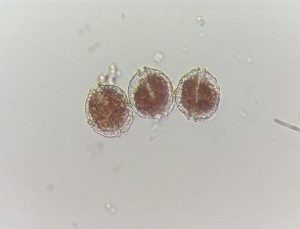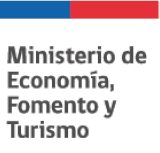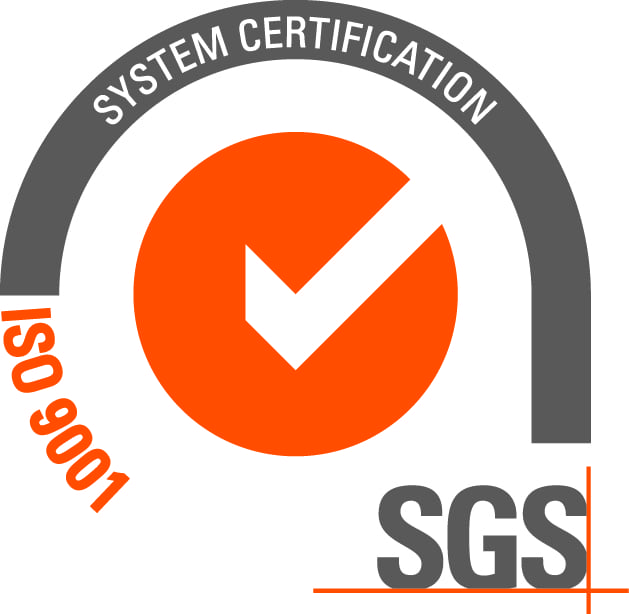
 El investigador senior del Instituto de Fomento Pesquero, Dr. Leonardo Guzmán Méndez, informó que entre los días 18 y 20 de marzo se realizó la décimo séptima reunión del Panel Intergubernamental sobre Algas Nocivas (IPHAB por sus siglas en inglés) que funciona desde los años noventa, como una forma de estimular el trabajo cooperativo entre los distintos países que integran la Comisión Oceanográfica Intergubernamental (COI), organismo de la UNESCO, y por tanto de las Naciones Unidas (UN). El IPHAB cuenta con dos secretarías ejecutivas, una asumida por la COI y la otra abordada por la Organización de las Naciones Unidas para la Agricultura y la Alimentación (FAO).
El investigador senior del Instituto de Fomento Pesquero, Dr. Leonardo Guzmán Méndez, informó que entre los días 18 y 20 de marzo se realizó la décimo séptima reunión del Panel Intergubernamental sobre Algas Nocivas (IPHAB por sus siglas en inglés) que funciona desde los años noventa, como una forma de estimular el trabajo cooperativo entre los distintos países que integran la Comisión Oceanográfica Intergubernamental (COI), organismo de la UNESCO, y por tanto de las Naciones Unidas (UN). El IPHAB cuenta con dos secretarías ejecutivas, una asumida por la COI y la otra abordada por la Organización de las Naciones Unidas para la Agricultura y la Alimentación (FAO).
El punto focal en nuestro país y que intermedia con la Secretaría Ejecutiva de la COI, es el Comité Oceanográfico Nacional (CONA) que es presidido por el Director del Servicio Hidrográfico y Oceanográfico de la Armada (SHOA). Desde sus inicios, Chile ha formado parte del IPHAB que ha sido representado por un investigador del Instituto de Fomento Pesquero (IFOP), dado el rol del Instituto, que actúa como asesor permanente del Estado, en materias de pesca y acuicultura, incluyendo temas ambientales y sanitarios, entre los cuales están incluidas las floraciones de algas nocivas (FAN). IFOP tiene una reconocida capacidad en el ámbito de la investigación, monitoreo y difusión de las FAN.
La reunión se inició el martes 18 de marzo, en oficinas de la UNESCO en Paris, Francia, la representación de Chile ha sido asumida por el Dr. Guzmán, quien comentó que al igual que en reuniones previas, se abordarán estrategias de trabajo a nivel global y regional que consideran tres aspectos medulares, la investigación científica, la capacitación de los investigadores y profesionales de los países miembros que trabajan en temas FAN y sus efectos, y desarrollar capacidades en las poblaciones ribereñas de los países son afectados por floraciones nocivas y toxinas acuáticas (educación pública y preparación de las personas respecto de las FAN y sus efectos). Por ello, la intención de estas reuniones, es desarrollar conocimiento que permita entre otros aspectos contar con capacidades para abordar interrogantes científicas tales como la relevancia de las alertas tempranas, de los sistemas de pronósticos y de los sistemas de control de las floraciones nocivas. Pero en general el conocimiento no sólo logra una mejor comprensión de las floraciones y sus efectos, sino que al mismo tiempo permita entender de que forma el cambio climático, por ejemplo, interactúa con las algas nocivas, afectando la distribución y abundancia de las microalgas y desde luego los procesos biológicos que ocurren a nivel celular y molecular de las microalgas. Las reuniones del IPHAB abordan el trabajo desarrollado entre dos sesiones del panel, en este año 2025 se abordará el trabajo realizado desde la última reunión efectuada en 2023, y para ello, estas reuniones tienen una estructura con diversos grupos de trabajo, además de la colaboración de organismos internacionales del sistema de las Naciones Unidas.
Finalmente, el Dr. Guzmán informó que las conclusiones y recomendaciones del informe de la reunión IPHAB 2025 es presentado a la Asamblea de la CO I que se realizará en el mes de junio en las oficinas de la UNESCO, y en Chile se debe dar cuenta también a la Asamblea del CONA, tanto por la importancia del tema de las FAN a nivel global, sino porque afectan la salud pública y determinadas actividades productivas, como la pesca, acuicultura y el turismo, en nuestro país. En Latinoamérica, Chile es uno de los países que ha logrado desarrollar capacidades que son reconocidas a nivel global y eso le ha permitido que la vigésima primera conferencia internacional sobre algas nocivas (ICHA 2025) pueda ser desarrollada en nuestro país, lo cual ocurrirá entre el 19 y 24 de octubre de este año, en la ciudad de Punta Arenas. Al evento se espera que asistan al menos 500 investigadores de a lo menos una cuarentena de países.




